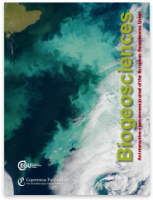“Anthropogenic climate change is increasingly threatening biodiversity on a global scale. Rich spots of biodiversity, regions with exceptionally high endemism and/or number of species, are a top priority for nature conservation. Terrestrial studies have hypothesized that rich spots occur in places where long-term climate change was dampened relative to other regions. Here we tested whether biodiversity rich spots are likely to provide refugia for organisms during anthropogenic climate change. We assessed the spatial distribution of both historic (absolute temperature change and climate change velocities) and projected climate change in terrestrial, freshwater, and marine rich spots. Our analyses confirm the general consensus that global warming will impact almost all rich spots of all three realms and suggest that their characteristic biota is expected to witness similar forcing to other areas, including range shifts and elevated risk of extinction. Marine rich spots seem to be particularly sensitive to global warming: they have warmed more, have higher climate velocities, and are projected to experience higher future warming than non-rich-spot areas. However, our results also suggest that terrestrial and freshwater rich spots will be somewhat less affected than other areas. These findings emphasize the urgency of protecting a comprehensive and representative network of biodiversity-rich areas that accommodate species range shifts under climate change.” More in Biogeosciences

